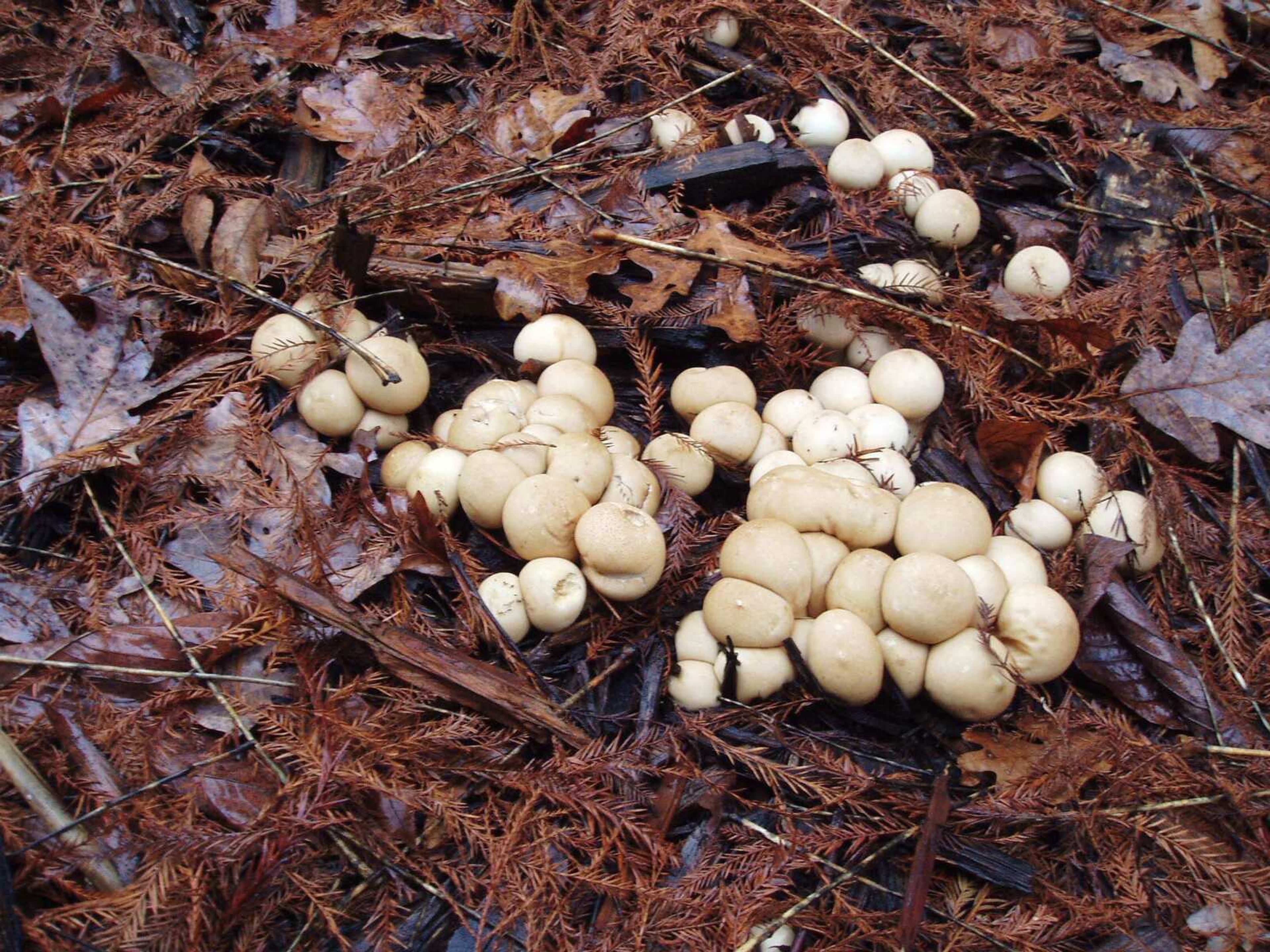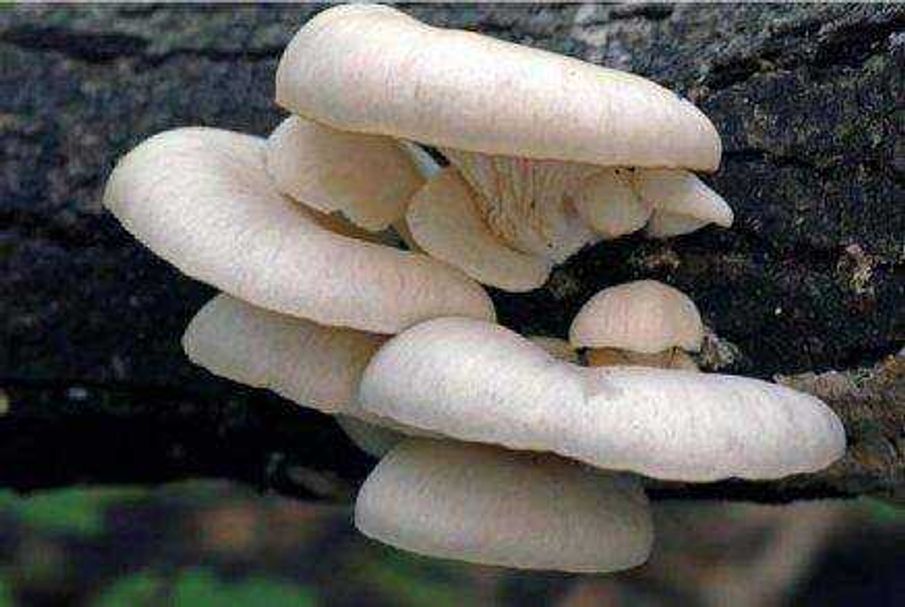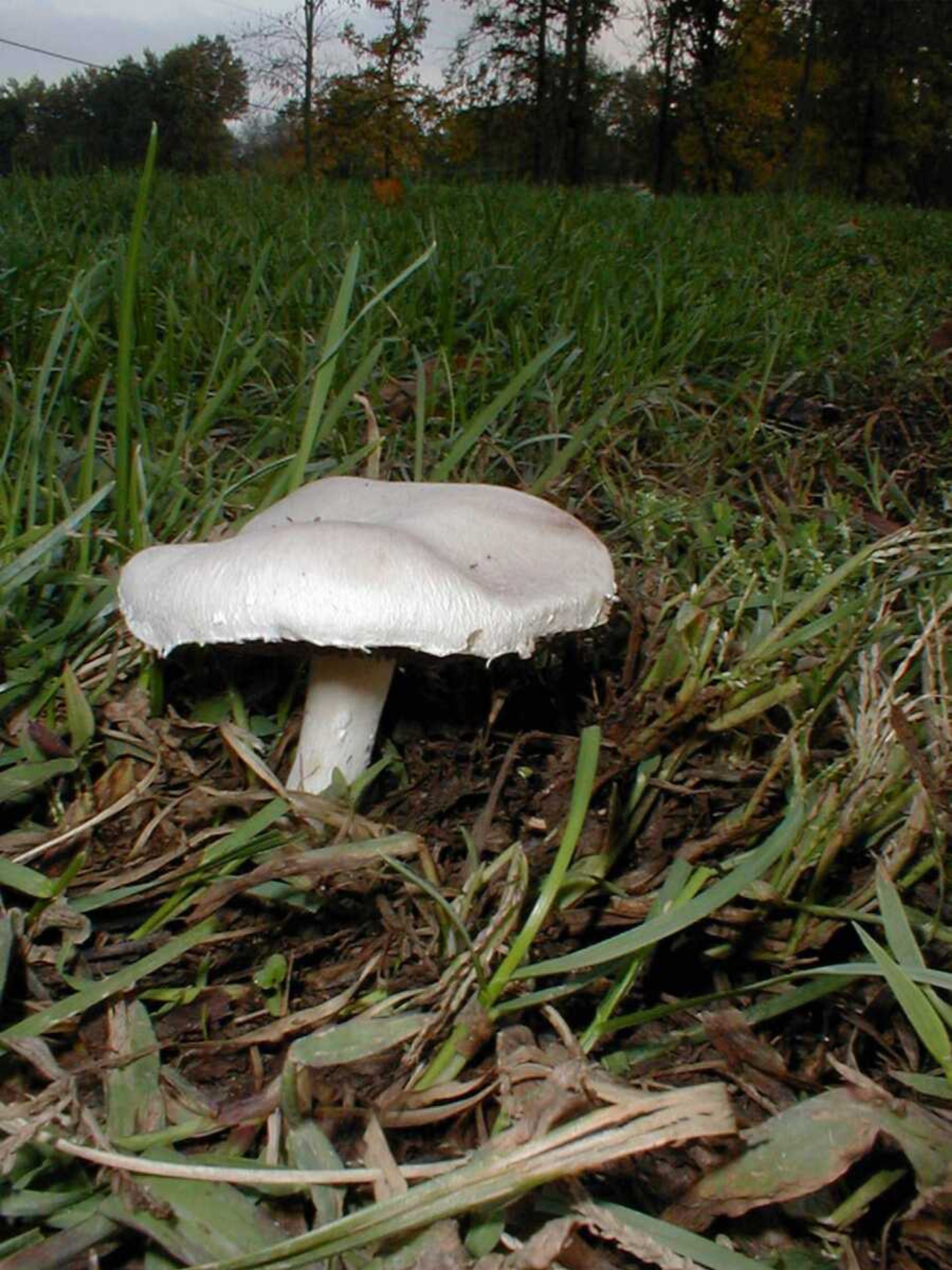Mushroom mysteries: Find out if the fungi in your yard are safe to eat
It's mushroom season in Southeast Missouri. Thanks to the rain-ridden season of autumn approaching, the mushrooms are popping up right and left on the forest floor and the front lawn. Most people know mushrooms are fungi. However, what most people don't realize is that what you see above the ground -- the "mushroom" -- is actually barely a tenth of the actual fungi growing, said A.J. Hendershott of the Southeast Regional Conservation Center...
It's mushroom season in Southeast Missouri. Thanks to the rain-ridden season of autumn approaching, the mushrooms are popping up right and left on the forest floor and the front lawn.
Most people know mushrooms are fungi. However, what most people don't realize is that what you see above the ground -- the "mushroom" -- is actually barely a tenth of the actual fungi growing, said A.J. Hendershott of the Southeast Regional Conservation Center.
"The root, so to speak, is dug into the ground," Hendershott said.
But are the mushrooms sprouting in yards and along roadsides safe to eat? It's best to use caution and ask these questions: Can you positively identify this mushroom? Do you know exactly what it is? If not, follow this common mushroom advice from the Missouri Mycology Society website: "When in doubt, throw it out."
According to Hendershott, two of the most common mushrooms that grow in Southeast Missouri are coral fungi and oyster mushrooms.
Coral fungi (technically named clavariaceae) are clumps of branching stems that point upward. They resemble coral and are usually either tan, white or yellow, but a few are pink or purple. They can grow up to 8 inches high, mostly in wooded areas on the ground or on rotted wood.
Although they are usually safe to eat, a few coral fungi have a laxative effect that some people are particularly sensitive to. If it tastes bitter, it's not recommended for consumption. Also, if they bruise a brown color when handled, they are most likely not a good idea to eat, according to information from the Missouri Department of Conservation.

Oyster mushrooms are more of a deep winter-type fungi, according to the department. The technical name for them is pleurotus ostreatus. They are large, tan- or ivory-colored and are shaped like an oyster shell. They have white sides running down to a short stem. They are soft and can range anywhere from 2 to 8 inches wide. Although oyster mushrooms are safe to eat, they may taste woody and unpleasant. They should be examined carefully for bugs before being consumed.
Another type of mushroom appearing in this area is the puffball, Hendershott said. The stalkless round mushrooms are white, tan or gray. The inside of a puffball is solid white but gradually turns yellow, then brown as the mushroom ages. Eventually it will turn to a mass of dark, powdery spores.
"If it's brown in any way, shape or form, throw it out," Hendershott said.
Hendershott has two children, so he knows all about making sure children know the difference between a good and a bad mushroom. He tells his children, "Look with your eyes, not with your hands." Whenever they find something they want to touch or eat outside, he said he insists they come get him to check it out, something he recommends for all parents.

He said that if it is something that you don't want your child to eat, don't just say no. "Give the reason up front," he said. "Say 'it's yuck!' Tell them it will make them sick." Just saying no, he said, may give the child an avenue to do it anyway. "You have to say no to so much. This time you have to give a reason."
Although many mushrooms, both good and bad, have been identified, there are some varieties with unknown reactions. For example, the pumpkin ringstalk mushroom's side effects are a mystery. "No one knows, and no one is going to experiment," Hendershott said.
For more information on mushrooms, contact the Conservation Center at 290-5218 or visit mdc.mo.gov/areas/cnc/cape/.
Connect with the Southeast Missourian Newsroom:
For corrections to this story or other insights for the editor, click here. To submit a letter to the editor, click here. To learn about the Southeast Missourian’s AI Policy, click here.









